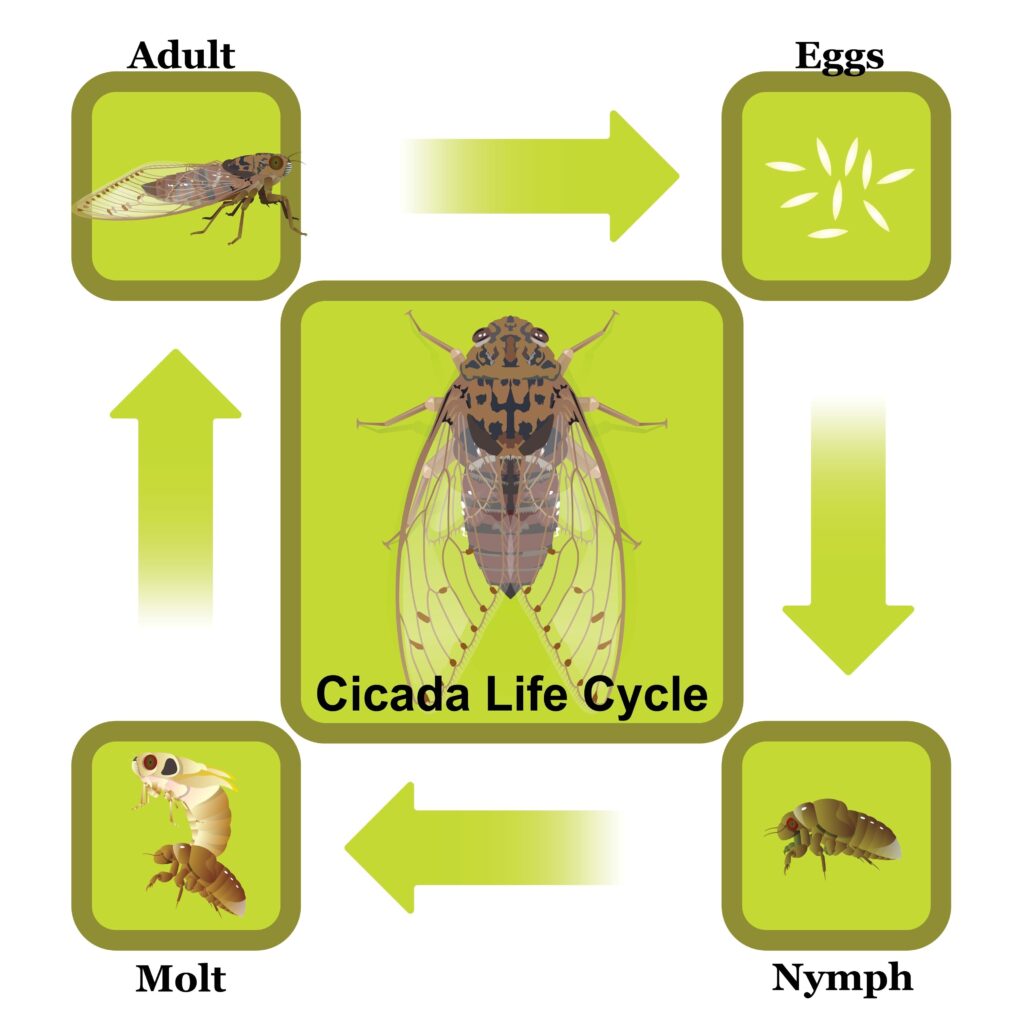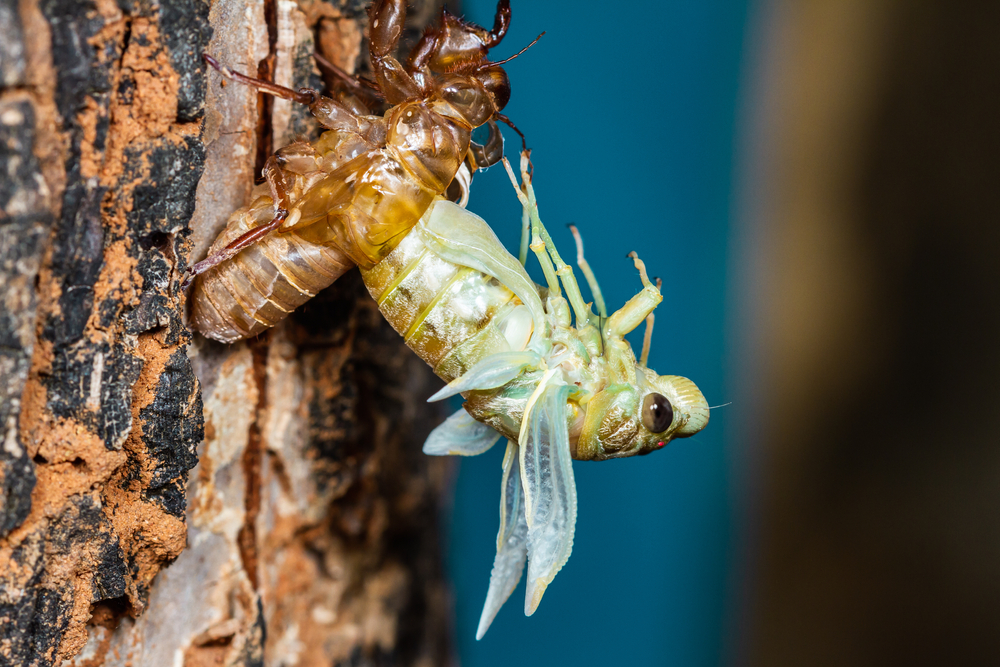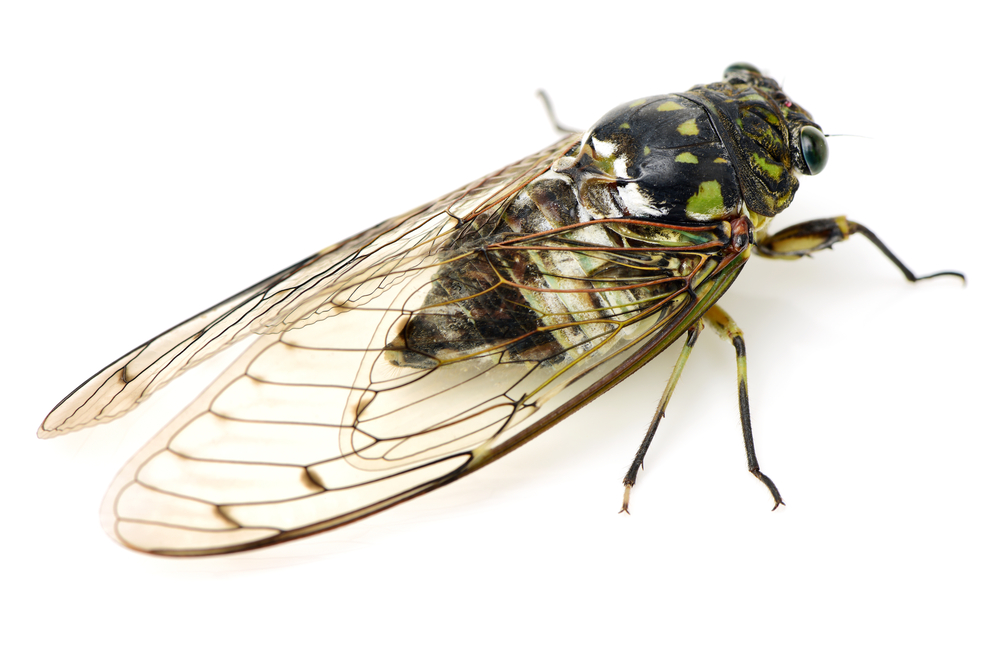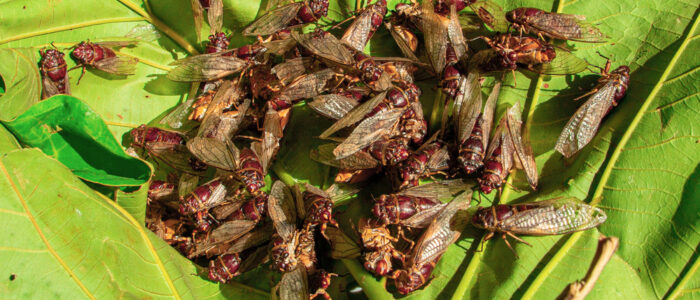2024 will be a banner year for cicadas. Normally different groups or “broods” of cicadas hatch every year. However, this is the first time in 221 years that Brood XIX–which has a 13-year life cycle–and Brood XIII–which has a 17-year life cycle–are hatching simultaneously. This means that between May and June, the cicada population in 16 southern and eastern states will boom. The next time this confluence will happen again won’t be until 2245.
Cicadas are not a pest we normally treat but because this event will occur over much of our service area, we wanted to inform our audience about what they might encounter. Let’s look at the fascinating life of cicadas and why you might see (and hear) them everywhere.
Why is the Cicada Life Cycle So Long?

The accepted answer is to avoid predators. By staying underground for long periods, cicadas remain hidden from the animals, birds and reptiles that eat them. By emerging periodically and in large hatchings, cicadas benefit from safety in numbers to better perpetuate their species.
Cicada Eggs
The life cycle begins with a female cicada laying between 200-500 eggs inside a small tree branch. They use a sharp appendage called an “ovipositor” to create a slit in the tree and deposit their eggs. Small, soft cicada nymphs hatch from these eggs six-to-eight weeks later and fall to the ground. The nymphs feast on the fluid flowing through plant roots and use their small legs to burrow underground.

Cicada Molting
Over the course of two to seventeen years–depending on the brood–the cicada nymphs remain subterranean and go through five molting stages. During each cicada molting stage, they shed their exoskeleton and grow larger. During the fifth and final molt, the nymphs leave their burrow and find a safe plant or tree to shed their final exoskeleton on. Once they do this, they emerge as full adult cicadas.
Cicada Adults
As adults, cicadas turn their focus to mating. The males emit the loud, droning sound you are probably familiar with in an attempt to attract a mate. Because cicadas usually hatch in large groups, you’ll hear thousands if not millions of these calls at the same time. Once they’ve successfully mated and the female has laid her eggs, the adults begin to die. You’ll often see their bodies littering the ground. The silver lining of this is that these bodies provide nutrients for the soil and for the future cicada larvae that will grow beneath their decaying bodies.
Watch this video to see the complete cycle in action.
Are Cicadas Harmful?
Cicadas are not harmful to humans. They may become a noisy nuisance, especially in the case of a double brood of cicadas in the same year, but they don’t damage crops or carry disease. In fact, cicadas are beneficial as they aerate the soil and fertilize the ground when they die. In some cases, where there are large numbers of cicadas, they could damage tree branches as they slice openings and lay their eggs within.
Do Cicadas Bite?
It’s unlikely that you would receive a cicada bite. While cicadas have a mouthpart called a “rostrum,” which they insert into plant roots to feed off the xylem, they don’t don’t have teeth and they don’t use it aggressively. Cicadas have no poison or venom.
What Can I Expect?

The past two years have been quiet. You may have noticed a lack of cicada sounds around your neighborhood. This is because there have been no periodical cicada hatchings since 2021. This is about to change.
With two major cicada broods hatching in May of 2024, you can expect to experience numbers that haven’t been seen in a while, likely numbering in the trillions. Brood XIII is expected to hatch Southern Wisconsin, Eastern Iowa and much of Illinois. Brood XIX will hatch across much of the southeastern U.S. and overlap Brood XIII along Southern Illinois. You can see the complete 2024 cicada map here.
The sound of these broods could become deafening in high population areas.
How Do Cicadas Make Those Sounds?
Male cicadas generate their mating calls by vibrating an elastic membrane called a tymbal against their abdomen. This ribbed membrane expands and contracts, making a “clicking” sound that gets amplified by the cicada’s round, hollow body. This vibration occurs 120-480 times per second depending on the species of cicada. The result is the buzzing sound you hear on summer days. Fortunately, cicadas keep their broadcasts to daytime and rest during the evening.
Interestingly, there are 3,400 different species of cicadas and each has a different mating call. The females can tell the difference and use the hum to locate the males of their species and then select their mates. Additionally, the wives’ tales are correct, cicadas get louder as the temperature rises.
Questions About Cicadas or Other Pests?
As your go-to source for all pest-related information, don’t hesitate to contact our team about any pest question or problem. Whether it’s termites in your home or mice in your business, Gregory handles it all. Call us today.

